Y-12 Blog
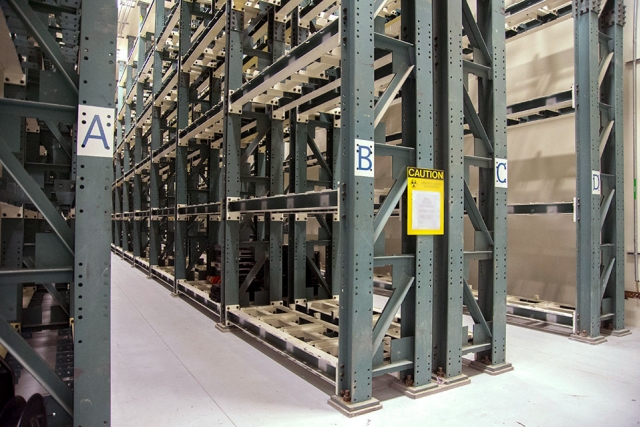 Storage area at HEUMF.
Storage area at HEUMF.
How do you go about adding 800 new storage locations to an already in place building? It’s a project that a team is tackling now at the Highly Enriched Uranium Materials Facility as they add more storage space for rackable can storage boxes.
Project Manager Michael Gilhooly said, “Y-12 canning operations have increased, so we need more storage space for rackable can storage boxes. The project will increase existing RCSB storage capacity inside HEUMF by adding 800 new storage locations.”
The project is being done in phases, so a benefit was leveraging the existing design package, purchase order, and documentation from the first phase of the project to benefit the second and third phases. Another advantage was using the same Construction craft crew from the first phase. The crew’s familiarity with the work provided both cost and schedule efficiencies, allowing the second phase to be completed three weeks ahead of schedule.
“The team was challenged to complete field installation of all 800 new RCSB positions in the bay by September 30. We had to keep Phase 2 activities on schedule in order to achieve our challenge goal,” Gilhooly said.
Working in HEUMF isn’t easy. “Logistics for moving the steel beams into HEUMF, and installing each beam is difficult. Extraordinary communication, coordination, and commitment to the success of this project have been displayed by our Construction craft, Material Management, and HEUMF operations personnel,” Gilhooly said. “This display of teamwork each day is the primary reason for the success of this project thus far.”
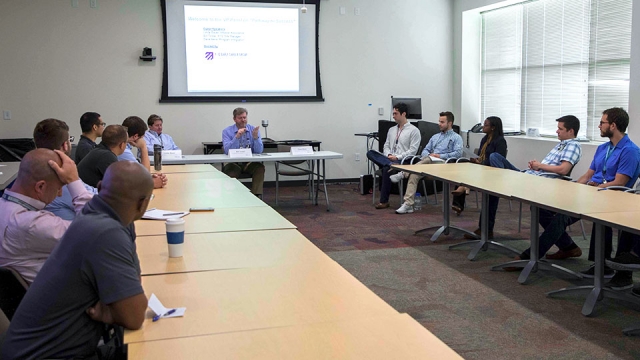 Y-12’s Early Career Group receives advice from three members of the CNS Executive Leadership Team (Linda Bauer, Bill Tindal, and Dave Beck).
Y-12’s Early Career Group receives advice from three members of the CNS Executive Leadership Team (Linda Bauer, Bill Tindal, and Dave Beck).
Y-12’s Early Career Group sponsored a professional development panel, “Pathway to Success.” The panel discussion featured CNS Vice Presidents Linda Bauer, Dave Beck, and Bill Tindal.
The executive leadership team members shared insights about their career paths with the attendees. Some question topics included their defining career moment, how to successfully navigate road blocks, creating career goals and advice they would give to their early career selves.
When asked about traits and skills for success, Bauer suggested keeping your cool under pressure, be a team player, and be willing to work as hard as you’re asking others to work.
One solid piece of advice from Tindal was to treat your current job like a serious relationship: “Don’t cheat on your job.” He made the point that you should be forward-thinking and work on bettering yourself and your skills, but to never lose focus on your current position.
Beck shared some advice on creating measurable goals and how to be accountable for them. He suggested you ask yourself, “What can I do next year that will make a difference in 100 years?”
Panel attendee Josh Patterson, who works in Projects, said he felt fortunate to participate and gain valuable insight from the panel speakers. He mirrored their comments, saying, “During your early career you can sometimes get caught in the ‘churn’ and feel like the work you’re doing isn’t making a difference. But it does matter now, and it will matter in 100 years.”
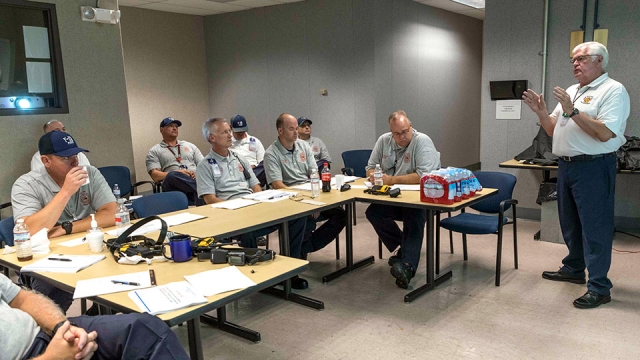 Bill Ho-Gland, Pantex assistant fire chief, discusses leadership and expectations with fire officers at Y-12 during a recent visit.
Bill Ho-Gland, Pantex assistant fire chief, discusses leadership and expectations with fire officers at Y-12 during a recent visit.
The Pantex and Y-12 Fire Departments work to operate as one team — the CNS Fire Department. They often aid the other site establishing best practices across both departments. Most recent collaboration includes the Pantex Honor Guard training of Y-12 Fire Department’s newly created Honor Guard, providing subject matter experts for exercise evaluations across both sites, and having a single team at the Hazardous Materials Challenge at Los Alamos. The two teams work together to have a best-in-class enterprise fire department.
Recently, the two sites helped train each site’s fire department leadership. Assistant Fire Chief Bill Ho-Gland and Assistant Fire Chief Roger Paul collaborated to develop the training and teamed to deliver the training at each site sharing leadership expertise.
“While both sites are different in their daily functions, the emergency response elements are almost identical,” Paul said. “We feel that we can combine the knowledge and experience from both sites to assemble a ‘best-in-class’ enterprise-level fire department.”
CNS Enterprise Emergency Services Senior Director Doug Trout shared, “We want our fire departments to be successful and wanted the leadership training to provide a strong foundation to build upon.”
To help achieve their goal, Ho-Gland and Paul shared pertinent leadership material and expectations with fire officers (captains, battalion chiefs, division chiefs, and assistant chiefs).
Ho-Gland said, “The primary focus of the training is to review and delineate the absolutes between the captains and battalion chiefs at both sites, since these positions are the primary response officers on a given emergency.”
As employees, we hope we don’t need to call on the fire departments for their expertise, but we can rest assured we are in good hands if the fire departments are needed.
“The fire departments at both sites are among the most trained and equipped responders in the country,” Paul said. “Both departments are capable of managing and mitigating fires, technical rescues, advanced life support medical response, hazardous materials response, and vehicle rescue.”
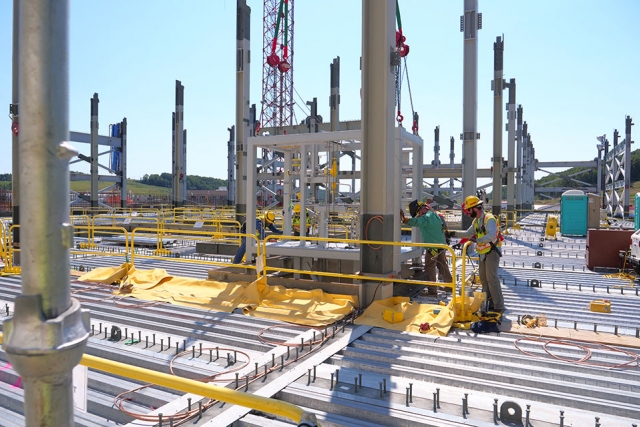 The first nuclear process equipment is installed at the Uranium Process Facility Salvage and Accountability Building.
The first nuclear process equipment is installed at the Uranium Process Facility Salvage and Accountability Building.
The Uranium Processing Facility (UPF) Project installed the first nuclear process equipment, a process skid, at the Salvage and Accountability Building (SAB) in September. It is one of approximately 200 skids that will be installed at UPF.
A skid is a grouping of preassembled components, like tanks, valves, and pipe spools. Each skid is a “building block” for the overall process system. The SAB is essentially a small chemical processing plant. The skid is a preassembled and tested portion of that plant.
“This marks a major step in our commitment to build UPF by 2025,” said UPF Vice President and Project Director John Howanitz. “We’re not just constructing buildings anymore; we’re starting to accept and install process systems that will eventually support production operations. As buildings go vertical and walls go up, construction will be punctuated by installation of larger equipment. The placement of this first nuclear process skid is an illustration of our momentum.”
“This was a heavy, complicated lift that required precision placement,” said SAB Deputy Area Manager Randy Holman. “It required two cranes to lift the equipment into place before the crew bolted it to the second floor. The team came together and placed the skid without incident. The work and planning that went into setting this skid in place really paid off. The team deserves the credit for achieving this milestone.”
The UPF supports the Uranium Mission Strategy, which ensures the long-term viability, safety, and security of enriched uranium capabilities in the United States. UPF will replace casting, special oxide production, and salvage and accountability capabilities from a World War II era building with a modern, more efficient, and safer facility for conducting highly-enriched uranium processing operations at the Y-12 National Security Complex.
Consolidated Nuclear Security, LLC, is building UPF for the National Nuclear Security Administration through a subcontract with Bechtel National, Inc.
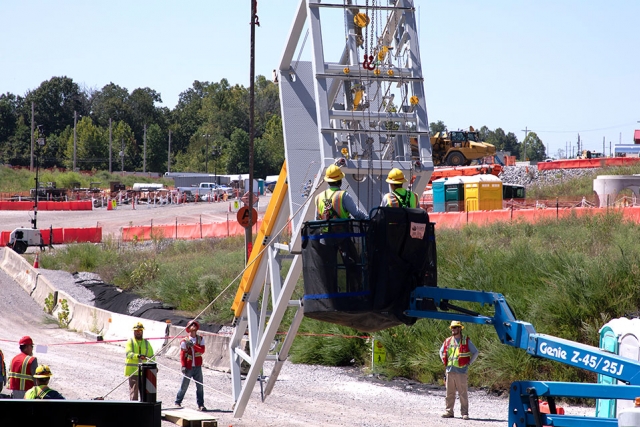 The first nuclear process equipment was delivered to the Uranium Process Facility (UPF). It is one of approximately 200 skids that will be installed at UPF.
The first nuclear process equipment was delivered to the Uranium Process Facility (UPF). It is one of approximately 200 skids that will be installed at UPF.
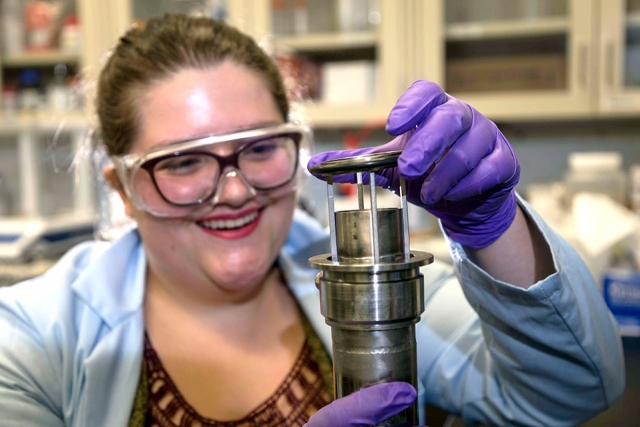 Y-12 intern Colleen Hyer inspects the sublimation chamber she and intern Dalton Parker designed.
Y-12 intern Colleen Hyer inspects the sublimation chamber she and intern Dalton Parker designed.
At the Y-12 National Security Complex, you won’t find employees lurking around in trench coats, but for intern Colleen Hyer, the site does hint of intrigue.
“Because of the tight security, it’s got a bit of a secret agency feel. Mysterious and exciting,” she said. “
Hyer, a junior majoring in chemical engineering at South Dakota School of Mines and Technology, might not have found much in the way of spy stuff at
“My project dealt with electroplating aluminum onto a zirconium substrate to see if zirconium is a good testing substitute for uranium,” she said. “The plating keeps certain components from corroding in the oxygen atmosphere.”
One of her tasks was to create an aluminum and stainless steel sublimation chamber, which is used to convert a solid to a gas. “There are glass ones out there, but the substance we worked with reacts violently with materials in glass, so we needed the chamber made from a combination of the two metals,” she said.
John Freiderich, Hyer’s work mentor, didn’t provide a blueprint for making the chamber. Instead, he wanted Hyer and intern Dalton Parker, a senior from Tennessee Tech, to put their problem-solving skills to work.
“I’ve had good success incorporating interns into my projects,” Freiderich said. “We work on tasks together, but at the same time, I wanted Colleen and Dalton to be free thinkers. I wanted them to build a chamber on their own, to learn and figure out the science and engineering they don’t know yet.”
They did just that, coming up with their own working prototype.
| Y-12 2019 interns by the numbers | |
|---|---|
| 29 | interns |
| 24 | undergrads |
| 5 | grad students |
| 19 | colleges and universities represented |
| 9 | majors represented |
| 10 | home states represented |
| 50 | Y-12 interns hired since 2015 |
Hyer and Parker were two of 29 interns at the site who worked on projects ranging from making ceramic radiation detectors to building a procurement website to designing the circuit for a probe to detect the liquid and conductivity of molten salt to developing an app for a machine indicator light.
The intern program supports the site’s National Nuclear Security Administration mission in two ways: (1) students, some of whom obtained security clearances for their internship, apply their knowledge and skills to projects that directly support mission work, and (2)
More than 50 interns have been hired as employees since 2015, said Amanda Muirhead, who coordinates the
“I think what I enjoy most about this job is seeing how the students grow during their time here,” Muirhead said. “Something I have been encouraged by is just how positive this year’s group has been and their eagerness to participate, learn, and be challenged.”
Hyer’s next challenge is finishing her degree. And then? “In five years, I could see myself working at
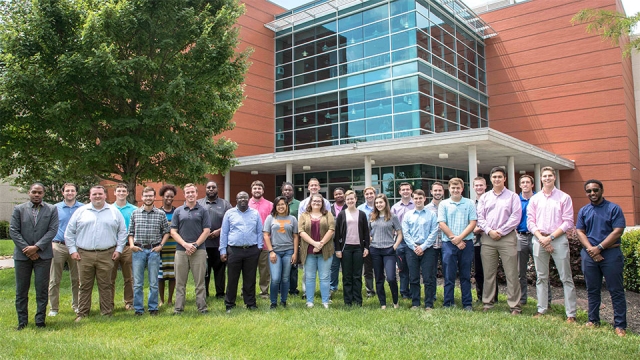 Y-12’s summer interns came from 10 states and represented more than 19 colleges and universities.
Y-12’s summer interns came from 10 states and represented more than 19 colleges and universities.
